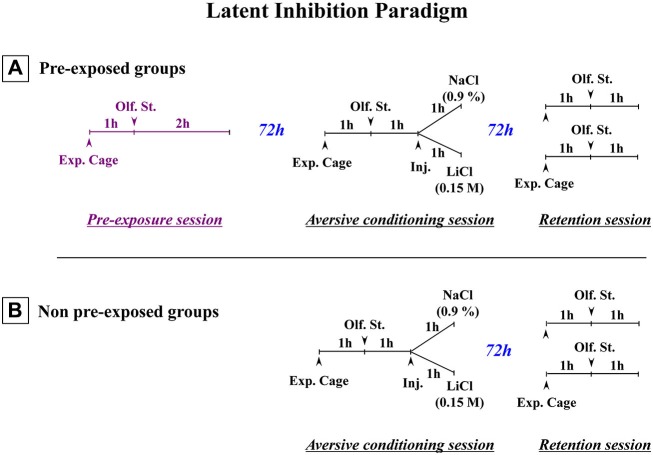Figure 1.
Schematic representation of the paradigm used to obtain latent inhibition. (A) Three-stage latent inhibition paradigm. During the pre-exposure (first) session, the animals were placed in the experimental cage (Exp. Cage) for 1 h without any olfactory stimulus (Olf. St.), before being exposed to the to-be-conditioned olfactory stimulus (banana odor) for 2 h. 72 h later, the animals were subjected to the conditioning (second) session. After a 1-h period that allowed the rats to become accustomed to the experimental cage, they were then exposed to the banana odor (CS) for 1 h. After that, they were given an intraperitoneal (i.p.) injection of either a saline (NaCl 0.9%) or an isotonic solution of LiCl (0.15 M). They then remained in the cage with the olfactory stimulus for a further hour. 72 h later, they were returned to the experimental cage for the test (third) session. After a 1-h familiarization period, they were exposed to the CS for a further hour. Their attraction or aversion towards the olfactory stimulus (banana odor) was then assessed in terms of how much time they spent near the olfactive source. The olfactory aversive conditioning protocol (B) was exactly the same except that non-pre-exposed animals were subjected only to the conditioning (second) session and the test (third) session (Adapted from Jeanblanc et al., 2002).

